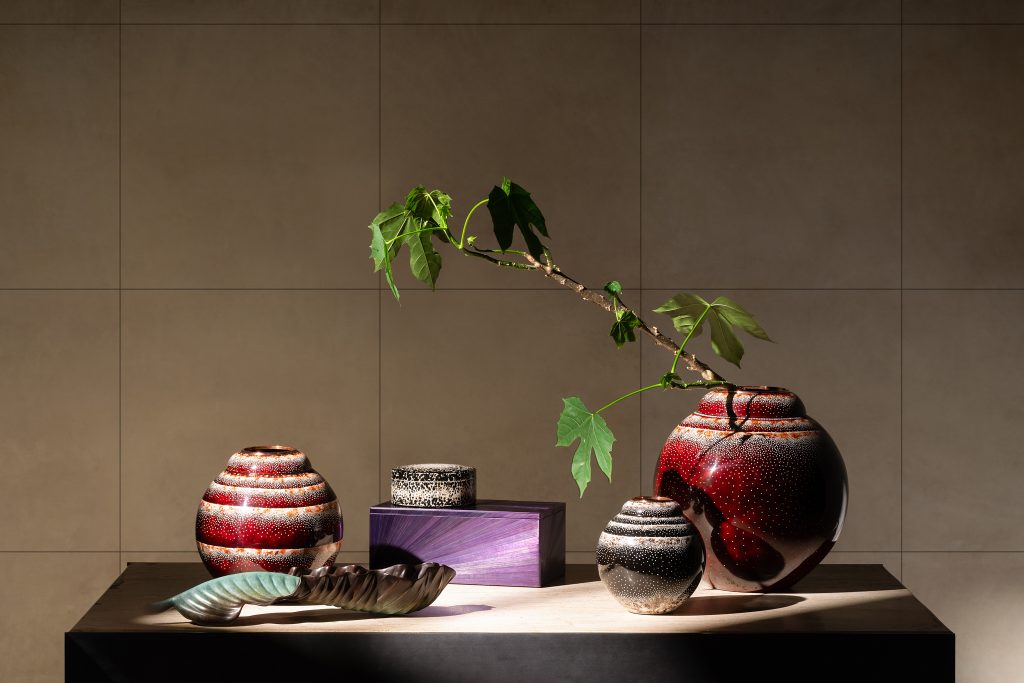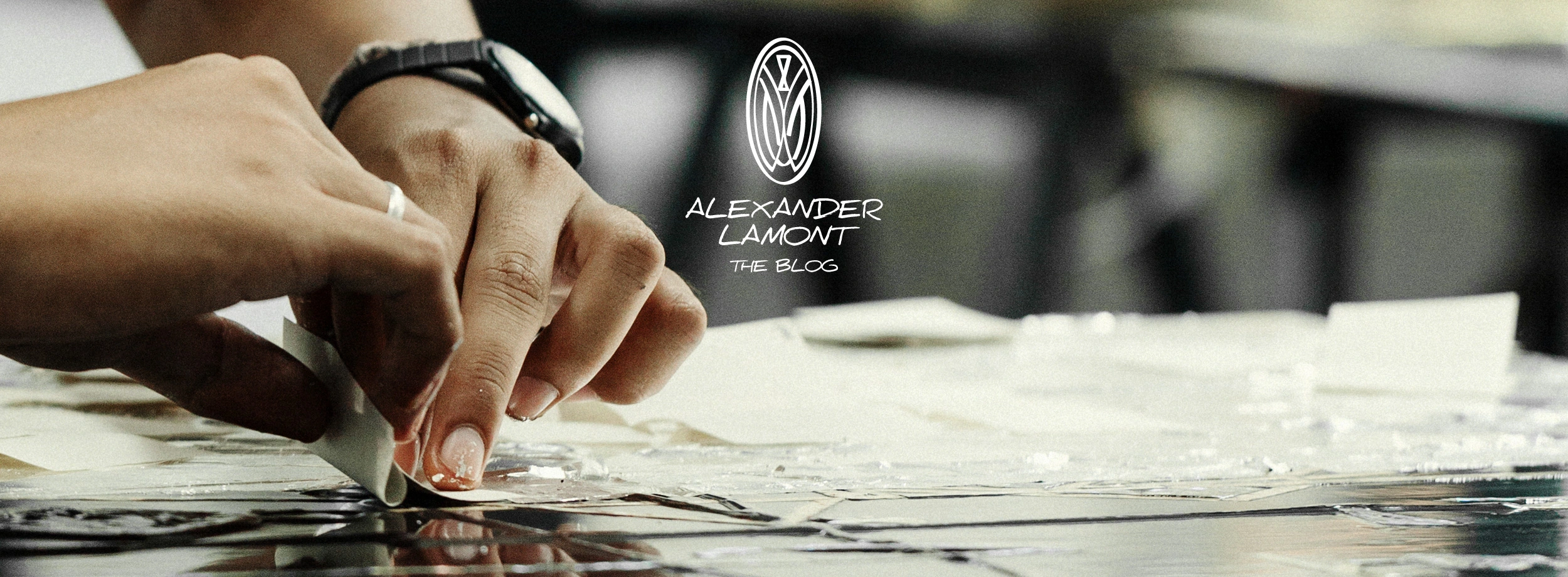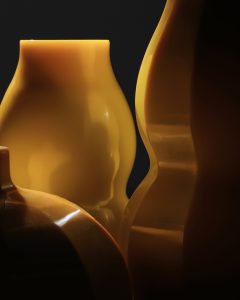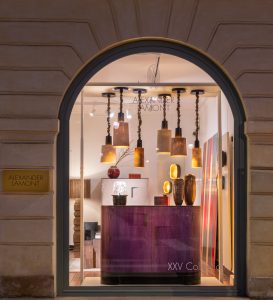
2025 marks 100 years since the Exposition Internationale des Arts Decoratifs et Industriels Modernes, which coined the term “Art Deco”. The exhibition heralded not only a modern design movement, but also a generation of seminal designers – Jean-Michel Frank, Andre Groult, Eileen Gray, Jean Dunand to name a few – who would marry modern design with the decorative arts in extraordinary ways that resonate still today in beauty, style and enduring quality.
To mark 100 years of Art Deco we will be publishing a series of blogposts entitled Craftsmanship Matters to emphasize the importance of authentic craftsmanship in design. Each article will focus on one of the craft techniques practiced within Alexander Lamont’s workshops.
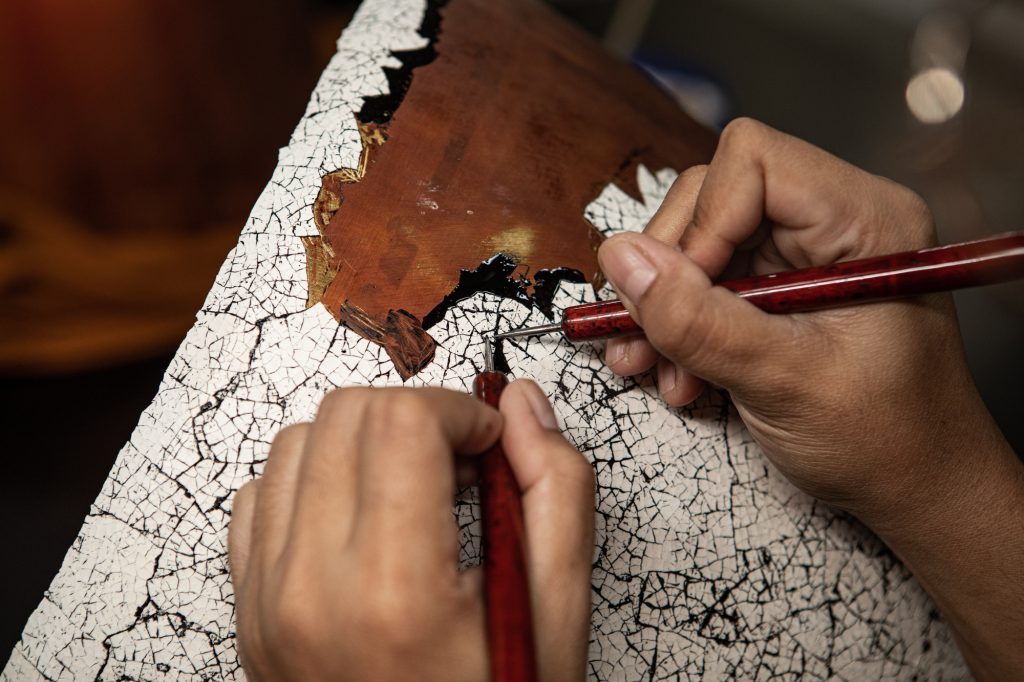
This month we look at Eggshell Inlay, a craft that was the subject of an article last month in the New York Times by Yelena Alpert [read more]. Yelena writes about eggshell as a recently rediscovered art, yet in the Alexander Lamont studio and workshops we have been using eggshell lacquer in our collections of furniture, lighting and accessories since 2012.
Our pieces are designed by Alexander and made to order for a specific interiors project. The designer has been able to visualize how the cabinet or the ceiling lamp, console or side table will glow like a jewel in the décor of the room, bringing the finishing touch, the accent that makes the whole room shine. Being able to see our pieces in situ in some of the world’s most beautiful projects is our greatest reward.
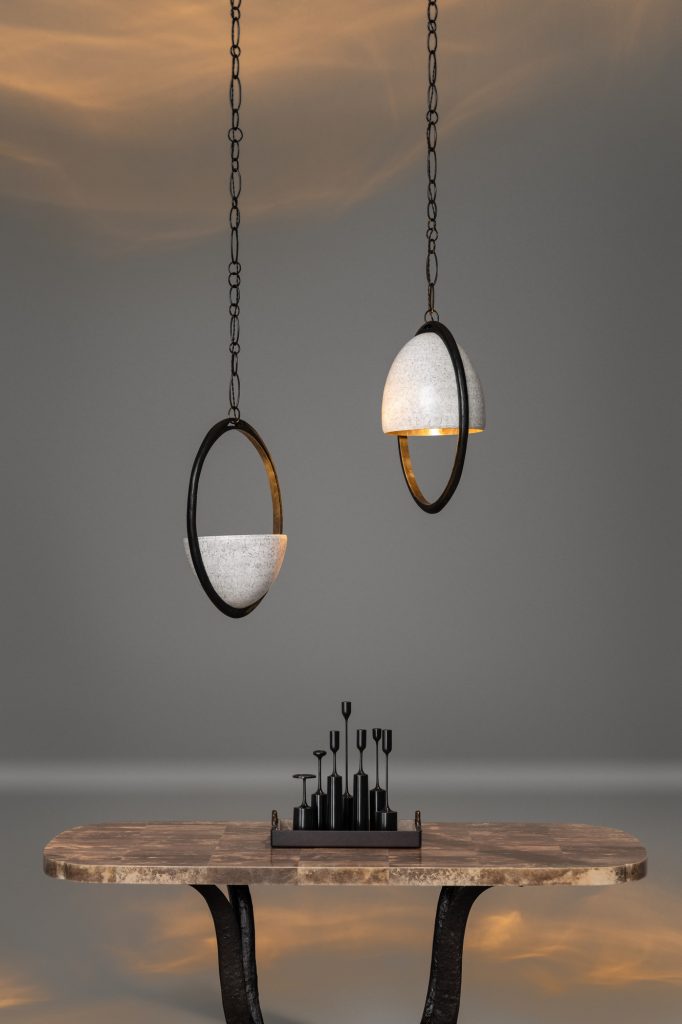
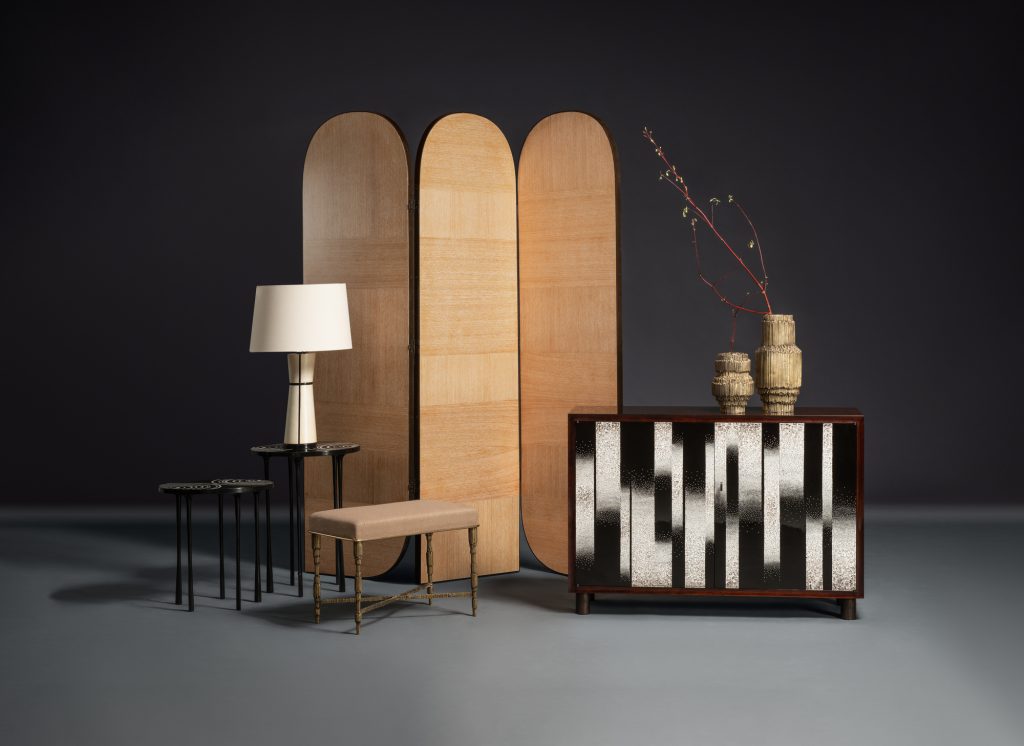
For many years Alexander Lamont has nurtured an almost obsessive passion for eggshell inlay and eggshell lacquer. It is the strongest and yet most delicate material. The work itself is satisfying as you push the little fragments of eggshell into place gradually building up a floor of intricate craquelure. But this is just the beginning. Finding ways to bring this ancient craft to life through colour, form, line and finish is where the fun really takes place.
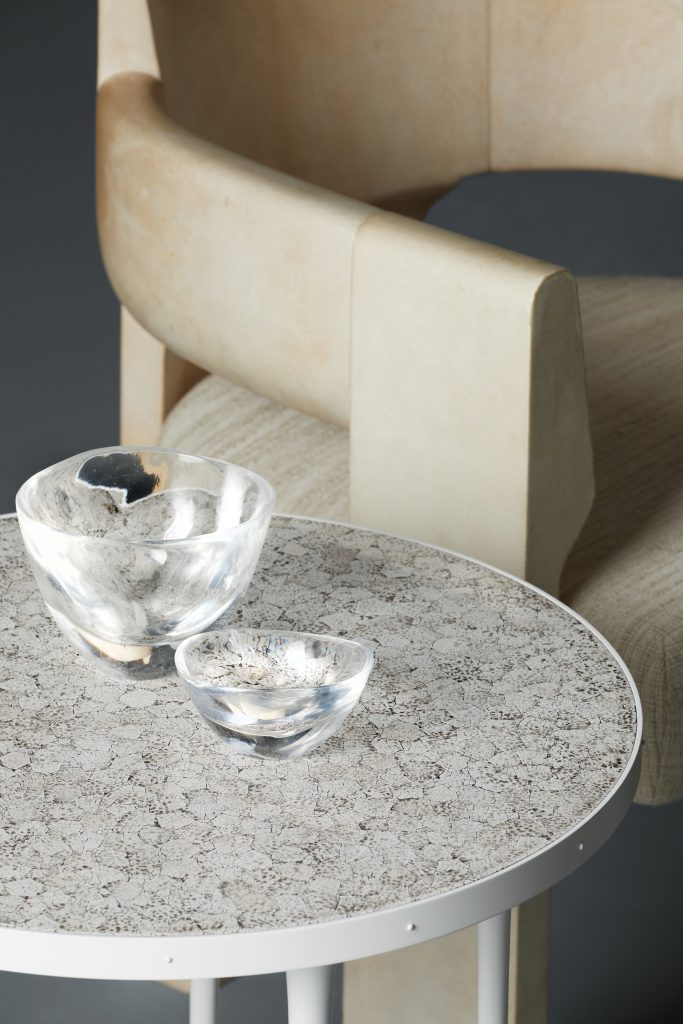

Alex used to work with eggshell makers in Vietnam but he found that there was always a certain static dullness to the results. This was caused by the ubiquitous use of MDF or composite substrates plus the fact that most of the ‘lacquer’ is not lacquer at all but one or other sprays from the plastic industry; acrylic and polyurethane were the most common finishes. All the eggshell handwork was being done on a nasty industrial product and then it was being covered with a nasty industrial product! No surprise that the eggshell felt dead.
Having seen the work of Japanese lacquer masters Alex knew that a whole other world of eggshell could be made by using the right natural ingredients and respecting the traditional process. It was this world of vibrant tiny, fragile, richly polished eggshell that he wanted to find and play with
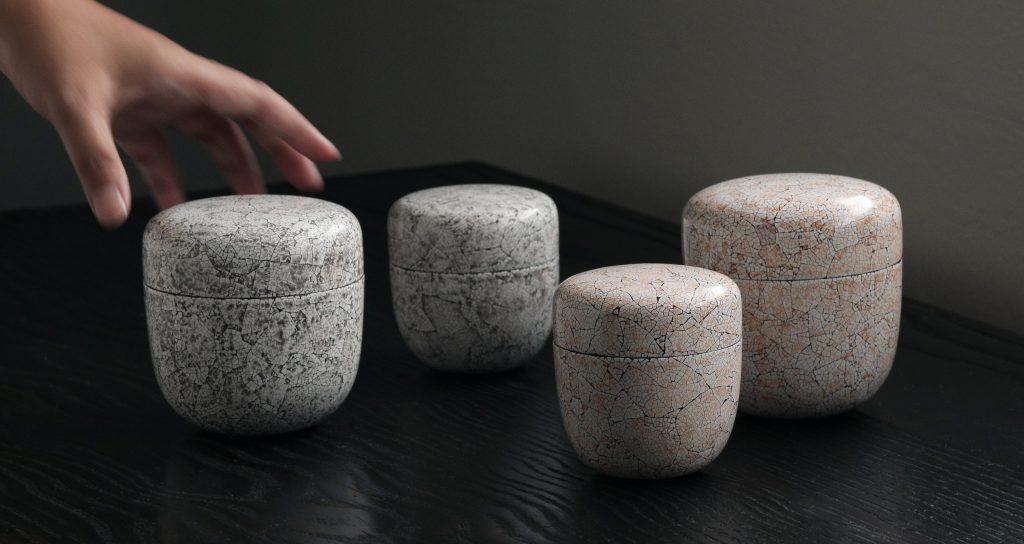
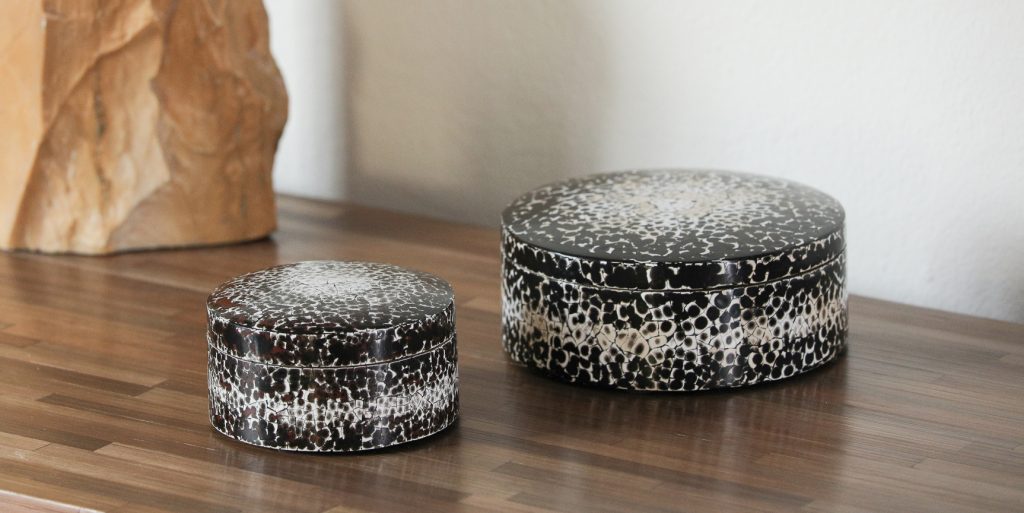


It is probable that eggshell was first developed to provide areas of white in lacquer work. It is almost impossible to make natural white lacquer. It has been used on Japanese sword handles and armor and numerous decorative pieces from tea caddies to hair pins to the accoutrements of the kimono.
Eggshell is made entirely from calcium carbonate. This is the main component of many materials found in nature: rocks, seashells and pearls. Eggshell also comes from one of nature’s most beautiful and primordial forms – the egg. Our eggshell is mainly made from chicken eggs (sometimes ducks) that we buy from a bakery nearby.
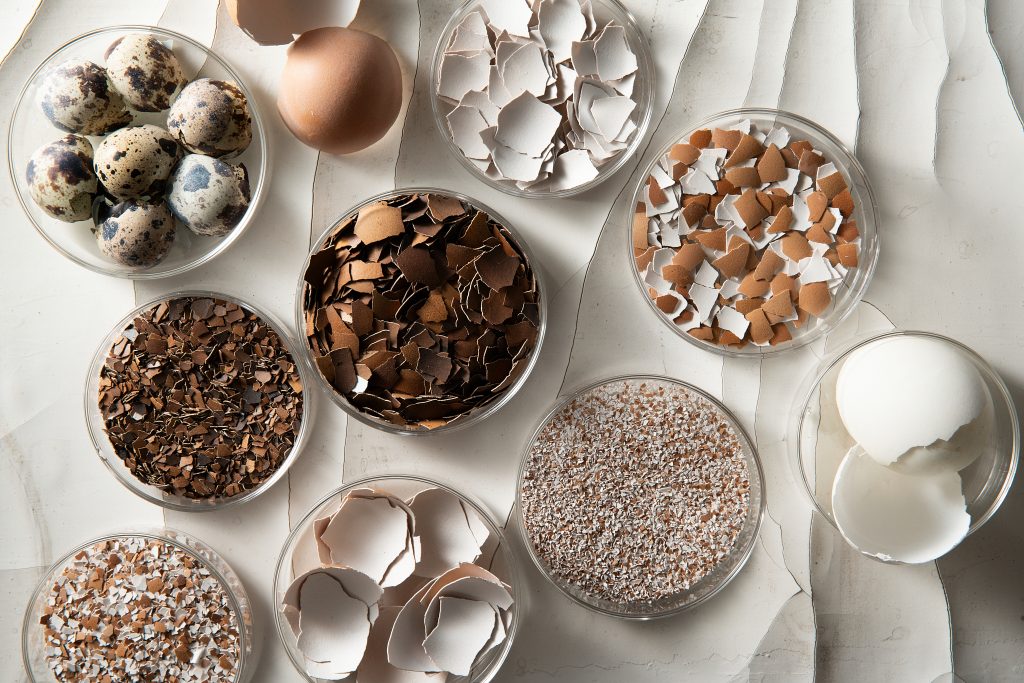
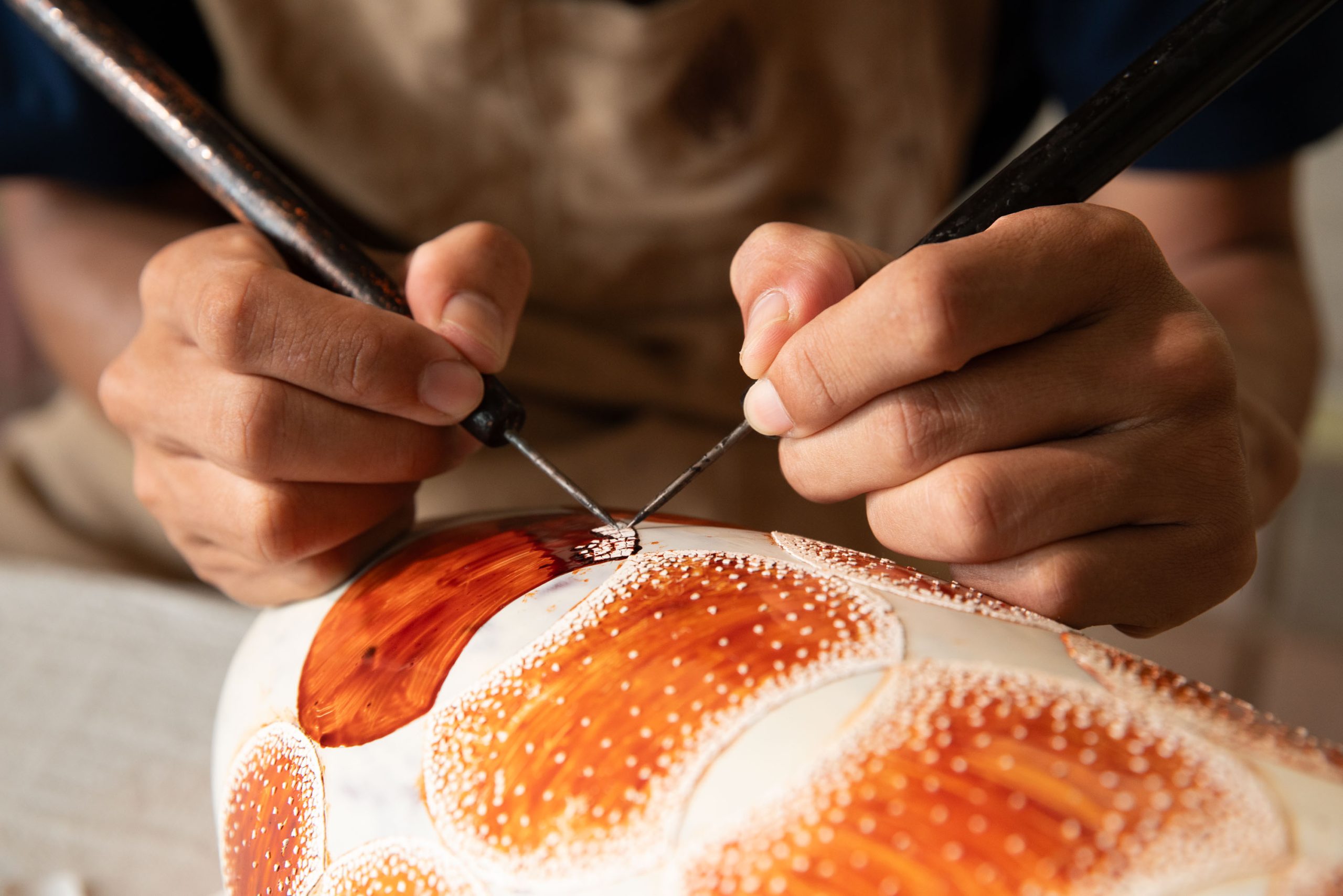
In our workshop we apply eggshell lacquer to surfaces mostly using the inside of the eggshell. The mosaic pattern is achieved with a cracking motion using the ends of pointed tools. The concave side of the eggshell provides a small ‘cup’ that then fills with lacquer or gold creating a pattern. Once the eggshell pattern has been laid down, numerous layers of natural lacquer are applied to build up the surface until it is smooth and can be polished.
Eggshell inlay requires skill, meditative attention and an eye for detail in order to achieve consistency and a flow of movement in the pattern. One beautiful aspect of this material is that different people create very different expressions of eggshell as artisan and material work together to make each unique piece.
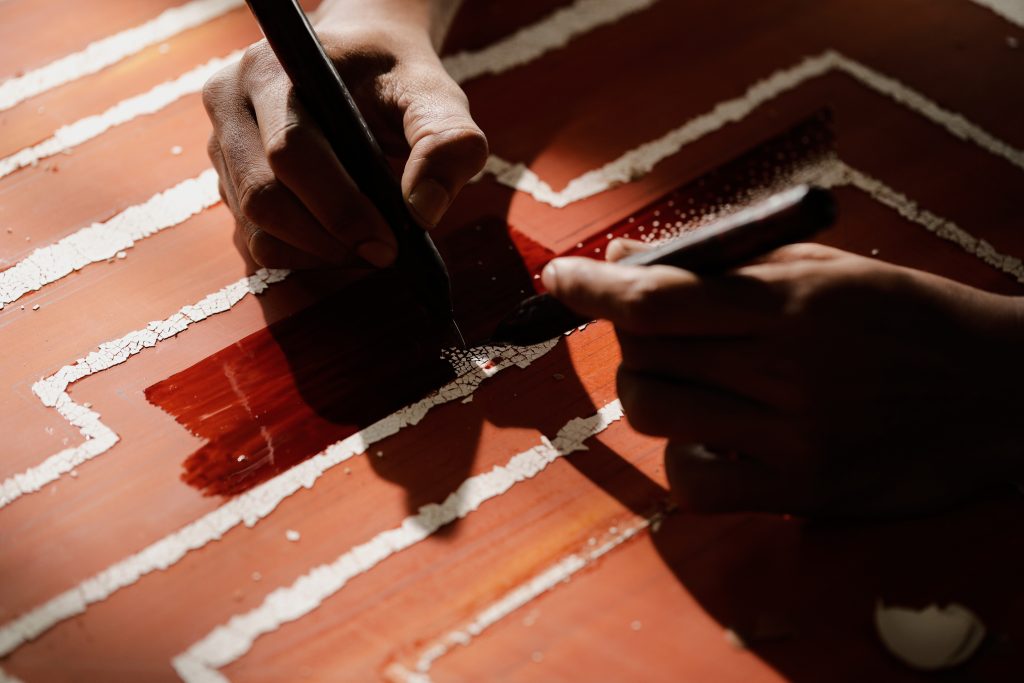

Craftsmanship is very much a day-to-day ritual. Each morning our artisans arrive at the studio, most of them by motorbike; they store their personal effects in their lockers and put on their aprons; they chat quietly as they settle themselves into a day of patient and meticulously detailed work. Most days they sit down to the piece they were working on the previous day. They pick up their tools and continue where they left off adding square inches to an intricate surface of lacquer inlaid with eggshell, mother of pearl, abalone, gold leaf, or covered with beetle wings.

They will work for up to 50 hours covering a vase in the finest mosaic of pale eggshell inlay so that it looks like a beautiful surface of miniature shattered porcelain delicately held together with layers of lacquer. The reward for such patient work is the finished piece itself which by now has a character, a presence of its own, imbued with the energy of the artisan, and the life and soul of the natural materials that have been used in its making.
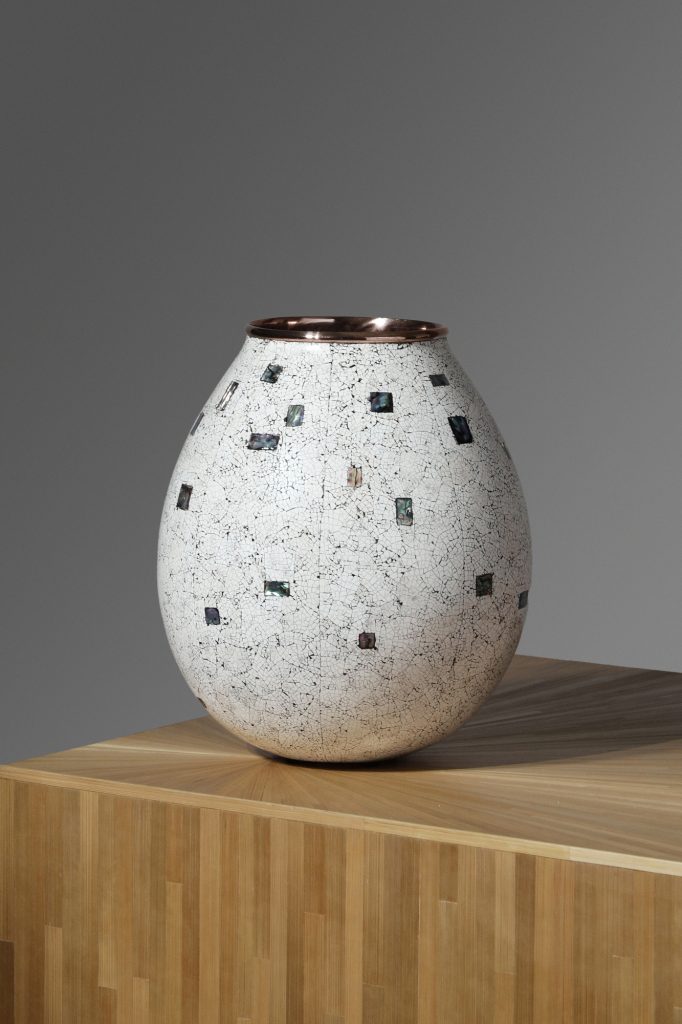
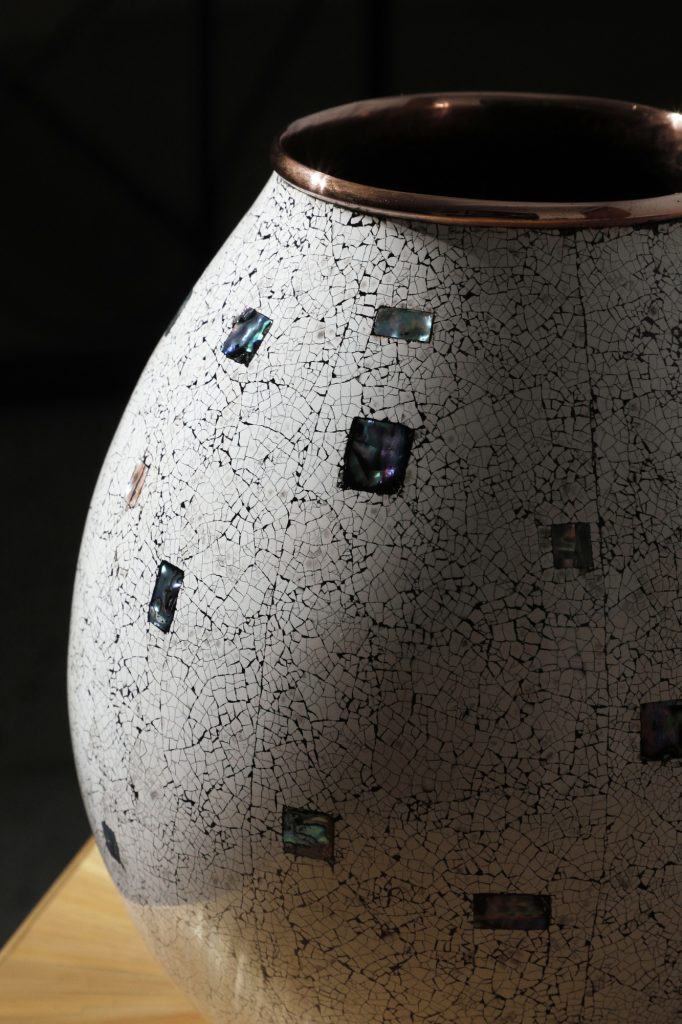
During the coming year we will be introducing a new group of eggshell lacquer vases that we think will delight and impress you – each piece a unique work of art made by a single artisan. It’s rare nowadays to find things made with such individual attention to detail through the day-to-day rituals of craft. Here at Alexander Lamont this work is our raison d’etre.
